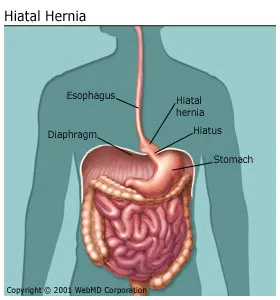

There are normally two types of hiatal hernia: moving hiatal hernias and fixed, or paraesophageal, hernias. This makes it simpler for the stomach to move through it.Īspects that can increase your risk of a hiatal hernia include: Some individuals are also born with an unusually large hiatus. This makes it possible for your stomach to press through your diaphragm.Īnother cause is putting too much pressure (consistently) on the muscles around your stomach. In some individuals, injury or other damage might deteriorate muscle tissue. The exact cause of many hiatal hernias isn’t understood. This condition primarily takes place in people who are over 50 years old.Ī hiatal hernia takes place when the upper part of your stomach rises through your diaphragm and into your chest area.There are generally two types of hiatal hernia: sliding and fixed.A hiatal hernia happens when the upper part of your stomach pushes up through your diaphragm and into your chest area.

It impacts up to 60 percent of people by the time they’re 60 years of ages, according to the Esophageal Cancer Awareness Association. This condition mainly happens in people who are over 50 years old. The opening it moves through is called a hiatus. Typically, your stomach is listed below the diaphragm, but in people with a hiatal hernia, a portion of the stomach rises through the muscle. You use this muscle to assist you breathe. The diaphragm is a big muscle that lies in between your abdomen and chest.


 0 kommentar(er)
0 kommentar(er)
